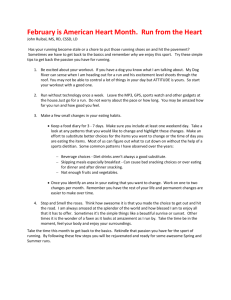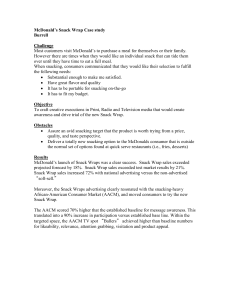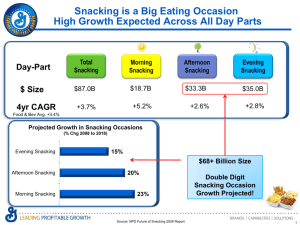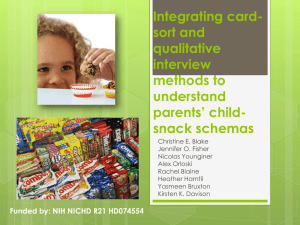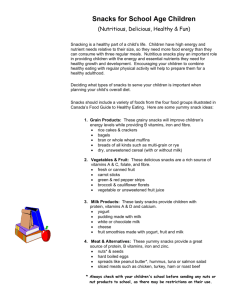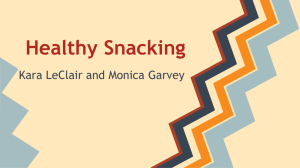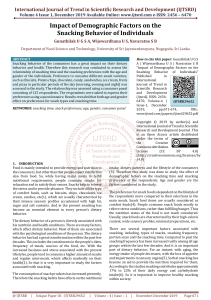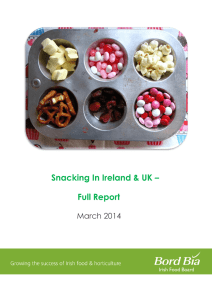Snacking In Ireland & UK – Executive Summary March 2014
advertisement
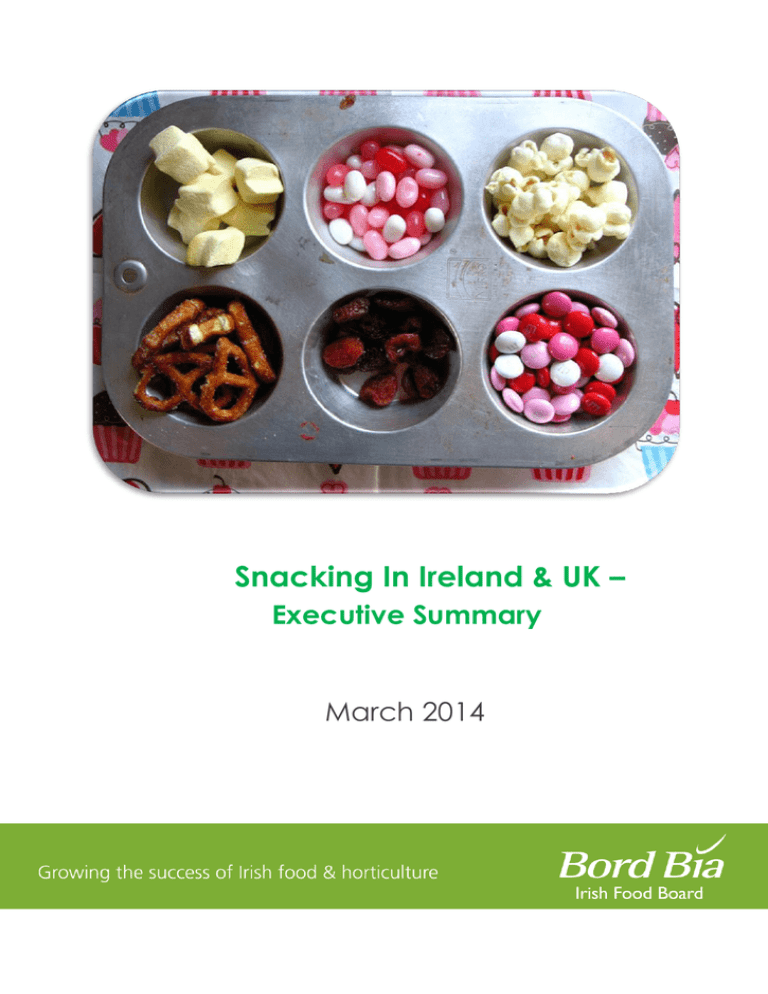
Snacking In Ireland & UK – Executive Summary March 2014 Introduction & Research Objectives This report looks at snacking patterns in Ireland and the UK and is based on consumption data and not sales data. The primary research objective was to understand the snacking occasion in order to identify opportunities for Irish food and drink companies. The more specific objectives were defined as: Definition of a snack according to the consumer Gain a detailed profile of consumers Deep drives into key categories To track patterns of snacking throughout the day and across the week Understand the key snacking need states across the segments Purchase decision making Identify snacking purchase channels Research Method There were two phases to the research: Phase One: Qualitative In Ireland, there were four standard focus groups with the key younger life stage segments (aged 16 – 35 years) In the UK, there were several online discussion groups with the sample broken out by life stage and region, with 56 respondents involved in the five day discussion based on five topics. Phase Two: Quantitative There were two parts to this phase: Firstly, there was an online survey with adults aged 16+ across Ireland and the UK. Total sample of 3,000 respondents, who were nationally representative. This produced 7,358 snacking occasions. Secondly, in order to understand snacking behaviour of the younger population, we asked Mums to complete a diary of kids aged 10 – 15 years. The end result was 4,886 snacking occasions. In total we have 12,244 snacking occasions. We have continued to keep the adults and youth data separate in this report. The research was carried out on our behalf by Coyne Research. In the online survey, we looked at six segments: 1. Young adults, aged 16 – 24 years 2. No kids, 25 – 39 years 3. Young families, 17 – 39 years 4. Child free, 40 – 59 years 5. Established families, 40 – 59 years 6. Silvers, 60+ (We also had the Youth booster of 10 – 15 year olds). For further information on this study please email info@bordbia.ie or telephone 01 6685155. Key findings from the study Key trends that are impacting both on a global and local snacking level are Migration and broadening of tastes; Recession and austerity; Health & Wellness and the obesity epidemic and Busy lives Consumer Definition of a Snack “Something, usually smaller than a meal that is eaten between, or outside of, regular meals for any reason” Snacking is considered a personal occasion (I decide when, where and what I’ll eat). It is convenient in terms of portability, not requiring utensils and little or no preparation. Drinks on their own are not considered a snack but accompany 42% of snacks, with hot drinks being the most popular beverage of choice. We are starting to see a new emerging role for snacks amongst the younger demographic. Snacks are now increasingly being seen by them as a “boost” (as opposed to the traditional mindset of a “treat”). They are moving to a more constant grazing throughout the day and less likely to have three set meals, therefore requiring the snack to perform a broader, more nutritive function. Snacking is becoming more “planned” From the research we can see that people are anticipating their snacking needs more, particularly as they get older. Seven out of ten snacks are purchased in a supermarket, with 59% bought as part of the larger shop. In terms of total snacks, the leading pack format was multipack at 34% but when we look at out of home snacks alone, this figure drops to 28%. How often: On average we snack 2.55 times per day, with Young Adults (16 – 24 year olds) being the highest snackers at over three times a day and the Silvers being the least likely to snack at 2.2. times per day. What: The top three snacking categories across all markets are confectionary (21%), crisps and (15%) and fruit (12%) Where: Four out of five (78%) snacking occasions occur at home and 22% are out of home. 72% of total snacks are purchased in the supermarket. When: We snack regularly throughout the day, with the peak period being between 3pm and 6pm accounting for almost one quarter (23%) of all snacking occasions. Why: Five key need states were identified for snacking – To energise (26%), as a habit (22%), indulge (21%), nourish (18%) and for health and wellbeing (13%) How much: On average we spend €2.13 per snack in the Republic of Ireland and £1.59 in the UK. In the Republic of Ireland, the Silvers are the top spenders on snacks and the Youth group the lowest. In the UK, the biggest spenders are those without children and the lowest are the Youth Segment.
